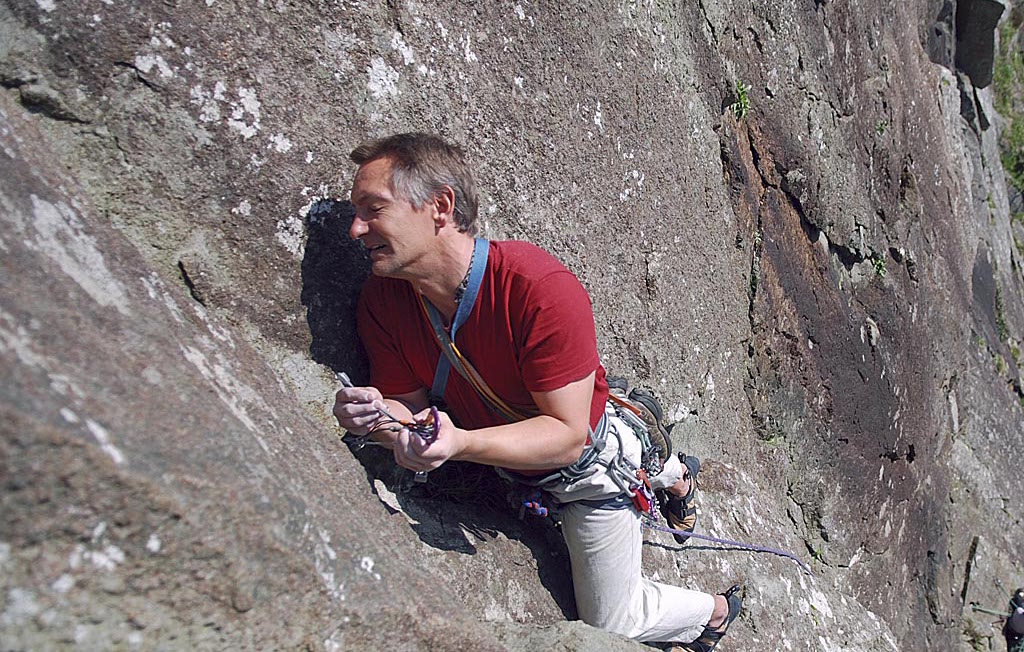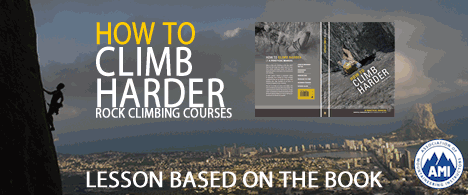Effective placement of gear comes down three things, knowing your racking system, developing a good eye for placements as well as the appropriate size of relative protection, and using rests where possible to place gear whilst in balance.
The first two are down to hands on experience with your rack and gear placements. You might go through you racking system at home, trying to reach straight for the piece of gear you think of and take it off and replace it in the same position in time each time. Getting to know gear placements is down to time spent at the crag.
You can however practice the hands-off rests we cover in hands off rests section. By being in balance you avoid placing gear mid move in a strenuous position. You may often find that the instant you have placed your runner you find a better position to place it from. Try to be relaxed when placing gear and ask yourself whether if you make another half move you will be in a more balanced position?
When at a rest it is sometimes possible to see a gear placement above. You may be able to judge the size from the rest and select the correct wire and clip it to a quickdraw ready to place, saving time and energy. Some people climb up with the gear ready in their mouths. Be aware that it is quite easy to drop the gear, possibly meaning you don’t have anything to place. Besides, metal plays havoc with you tooth enamel!
Placing Gear Efficiently exercise
Rack up ready to climb and walk along the bottom of a cliff playing ‘guess the placement’. Find a crack and guess the best size of gear. Experiment with other sizes to see if you got the best fit. See section on various gear placements.
You may be able to judge the size of a camming device placement in finger widths; one finger = cam 1, two fingers = cam 2 and so on.Try it and see if it works for you.
Placing gear on lead exercise
When you are leading try to place gear only where you can stand in balance or from a hands-off rest. Place the gear from here and before you leave this position take time to look up and spot the next rest and gear placement. Take the time to look at how you might climb the next section.
This can be described as anticipating the next moves and gear. So ask yourself two questions where you can stand next and where you can place the next gear. Until you can answer these two questions don’t move.
WARNING — Lead climbing is dangerous. Before attempting this exercise it is worth practicing placing gear on your route whilst on top rope, trailing a rope to simulate lead climbing. Make sure that your belayer has the neccesary skill to stop you if you fall!

